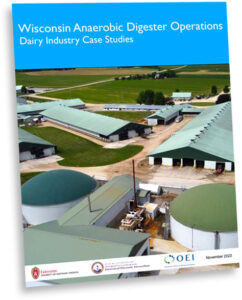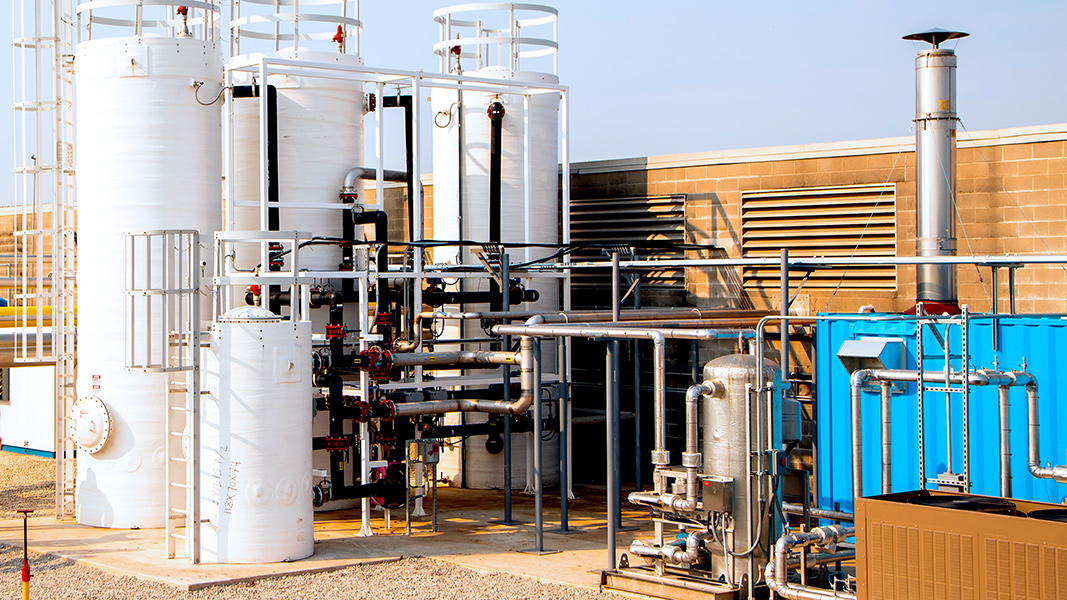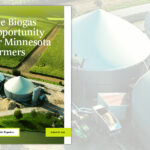Top: Biogas upgrading system at Dallmann East River Dairy. Photo courtesy of U.S. Gain
 The Wisconsin Office of Energy Innovation (OEI), including its Focus on Energy program, has been tracking anaerobic digestion developments in the state for almost 20 years. A 2010 BioCycle article reported on 31 farm digesters in Wisconsin; a 2015 article discussed the results of a survey of all anaerobic digestion infrastructure in the state. In 2022, OEI collaborated with a team from the University of Wisconsin-Stevens Point to prepare case studies on three farm digesters — Dallman East River Dairy in Brillion; Crave Brothers Farm in Waterloo; and EnTech Solutions in Springfield, a manure digester partnership serving multiple farms. Their report, “Wisconsin Anaerobic Digester Operations: Agricultural Industry Case Studies,” explores “how anaerobic digesters are being used in Wisconsin’s agricultural sector today, including their advantages and disadvantages.” The case studies with plentiful photos go into great (and very interesting) detail about each of these operations, all digesting dairy manure.
The Wisconsin Office of Energy Innovation (OEI), including its Focus on Energy program, has been tracking anaerobic digestion developments in the state for almost 20 years. A 2010 BioCycle article reported on 31 farm digesters in Wisconsin; a 2015 article discussed the results of a survey of all anaerobic digestion infrastructure in the state. In 2022, OEI collaborated with a team from the University of Wisconsin-Stevens Point to prepare case studies on three farm digesters — Dallman East River Dairy in Brillion; Crave Brothers Farm in Waterloo; and EnTech Solutions in Springfield, a manure digester partnership serving multiple farms. Their report, “Wisconsin Anaerobic Digester Operations: Agricultural Industry Case Studies,” explores “how anaerobic digesters are being used in Wisconsin’s agricultural sector today, including their advantages and disadvantages.” The case studies with plentiful photos go into great (and very interesting) detail about each of these operations, all digesting dairy manure.
Key takeaways from the case studies include:
- Digesters can be integral to the operation of large dairy farms, providing electricity and heat production for the farm, cow bedding, more versatile separated fertilizers, odor reduction, etc.
- Some dairy farmers are operating and monitoring their digester facilities on their own, while other farmers are minimally involved in the digester facilities on their farm.
- Changes to Wisconsin energy policies have greatly reduced the profitability of burning biogas in generators to produce electricity and heat, leaving digester owners looking for other options.
- Switching biogas use from generators to produce electricity and heat, to cleaning the biogas to produce RNG, requires significant capital and increased operation and monitoring time and expertise.
- Companies that run RNG facilities are working with large dairy farms, or clusters of large dairy farms, near natural gas pipeline injection points. In 2022, Wisconsin had no small dairy farms producing RNG. The dairy farms producing RNG ranged from 1,700 to 9,100 cows per farm. Farms located farther from injection points on natural gas pipelines may also be less likely to benefit from RNG.
The report can be downloaded via this link.













